Enumerate the Muscles of Mastication.
Muscles of Mastication are classified as main and accessory muscles. There are 4 pairs of main muscles of mastication viz.
- Temporalis
- Medial pterygoid
- Lateral pterygoid
- Masseter
All the main muscles of mastication are attached to the ramus of mandible are main muscles of mastication. They all are located in the infratemporal fossa except masseter.
All the main muscles are supplied by branches of mandibular nerve. Medial pterygoid is supplied by a branch from the trunk of mandibular nerve and others are supplied by branches from the anterior division of mandibular nerve.
Buccinator and suprahyoid muscles assist in mastication and are termed as accessory muscles of mastication.
Temporalis Muscle
It is a fan-shaped muscle present in the temporal fossa. Its anterior fibers are vertical whereas posterior fibers are almost horizontal.
Origin: It takes origin from the bones forming floor of temporal fossa and temporal fascia.
Insertion: It is inserted on the medial surface, apex and anterior border of coronoid process of mandible
Action: Anterior fibers elevate the mandible and posterior fibers retract the protruded mandible.
Nerve supply: Is by deep temporal branches of anterior division of mandibular nerve.
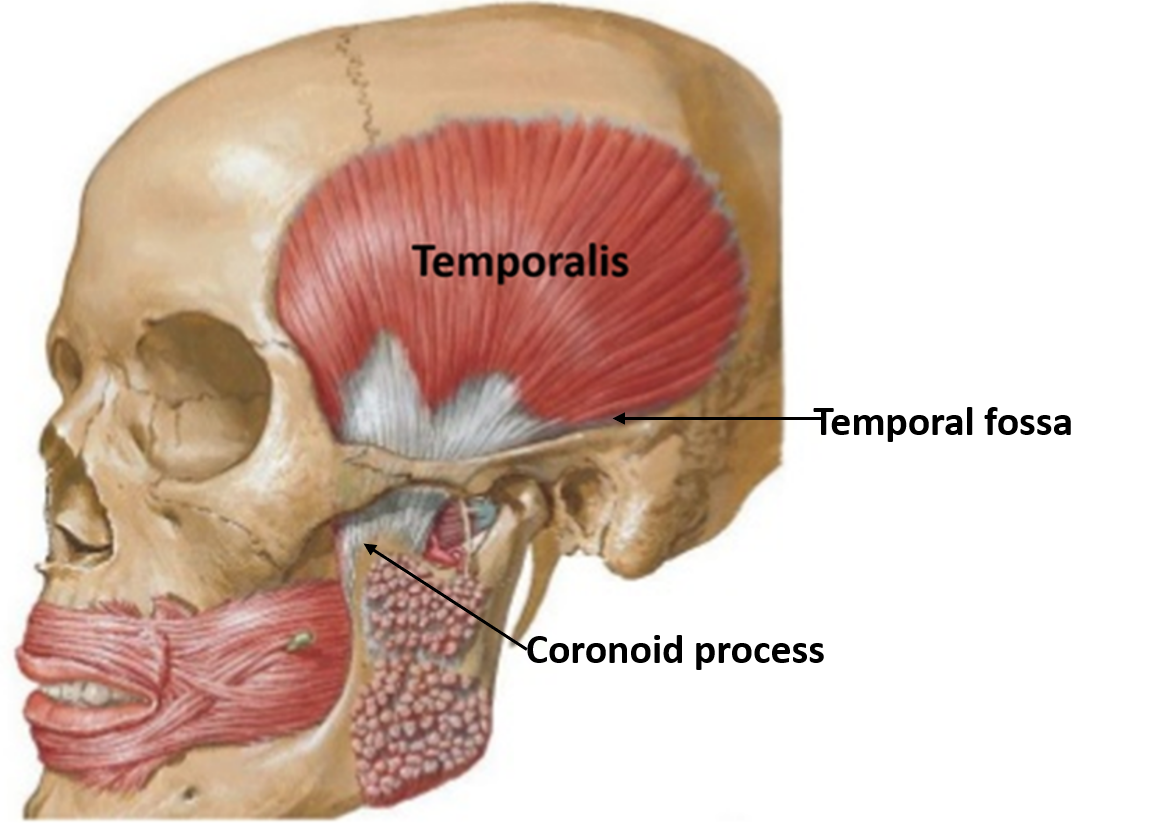
Masseter Muscle
Is a thick quadrilateral muscle covering the lateral surface of ramus of mandible.
Origin: It takes origin from the inferior border of anterior 2/3rd of zygomatic arch and medial surface of zygomatic arch.
Insertion: It is inserted on the lateral surface of ramus of mandible and angle of mandible.
Action: It elevates and protrudes the mandible.
Nerve supply: is by massetric branch of anterior division of mandibular nerve.
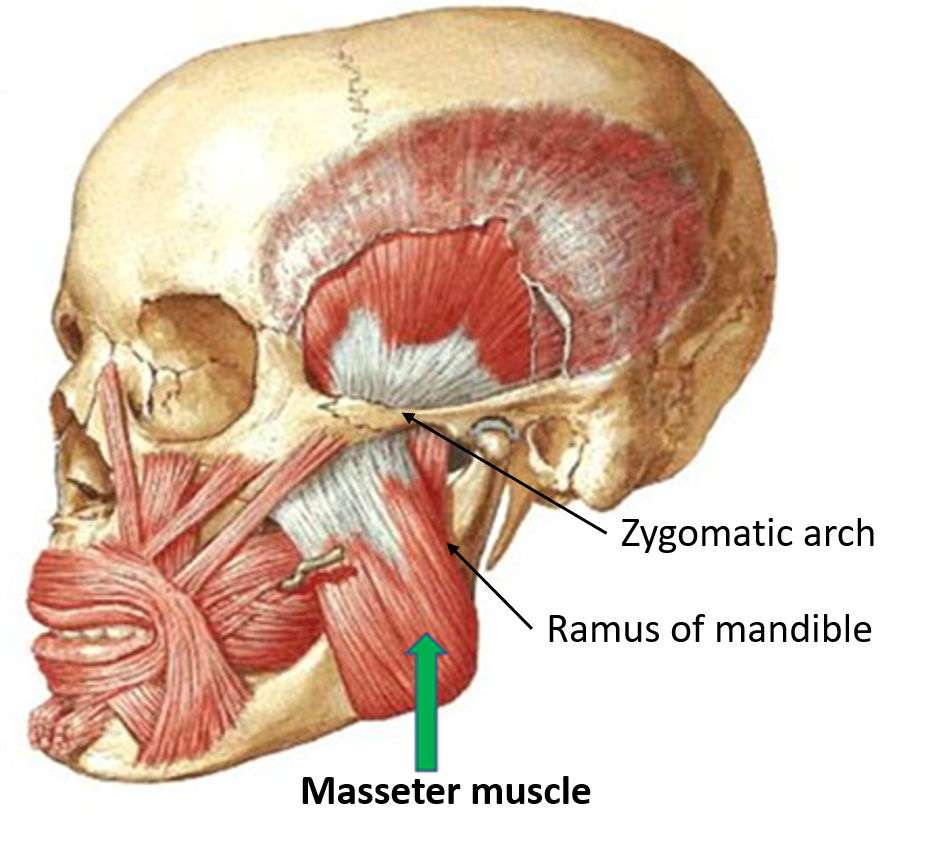
Medial Pterygoid Muscle
Is a quadrilateral shaped muscle and consists of two heads.
Origin: Is by two heads i.e. superficial and deep.
- Superficial head arises from maxillary tuberosity
- Deep head from medial surface of lateral pterygoid plate.
Insertion: It is inserted on rough area on the medial surface of angle of mandible.
Action: It elevates and protrudes the mandible. Along with lateral pterygoid muscle it produces side to side movement of mandible.
Nerve Supply: By nerve to medial pterygoid, a branch from trunk of mandibular nerve.
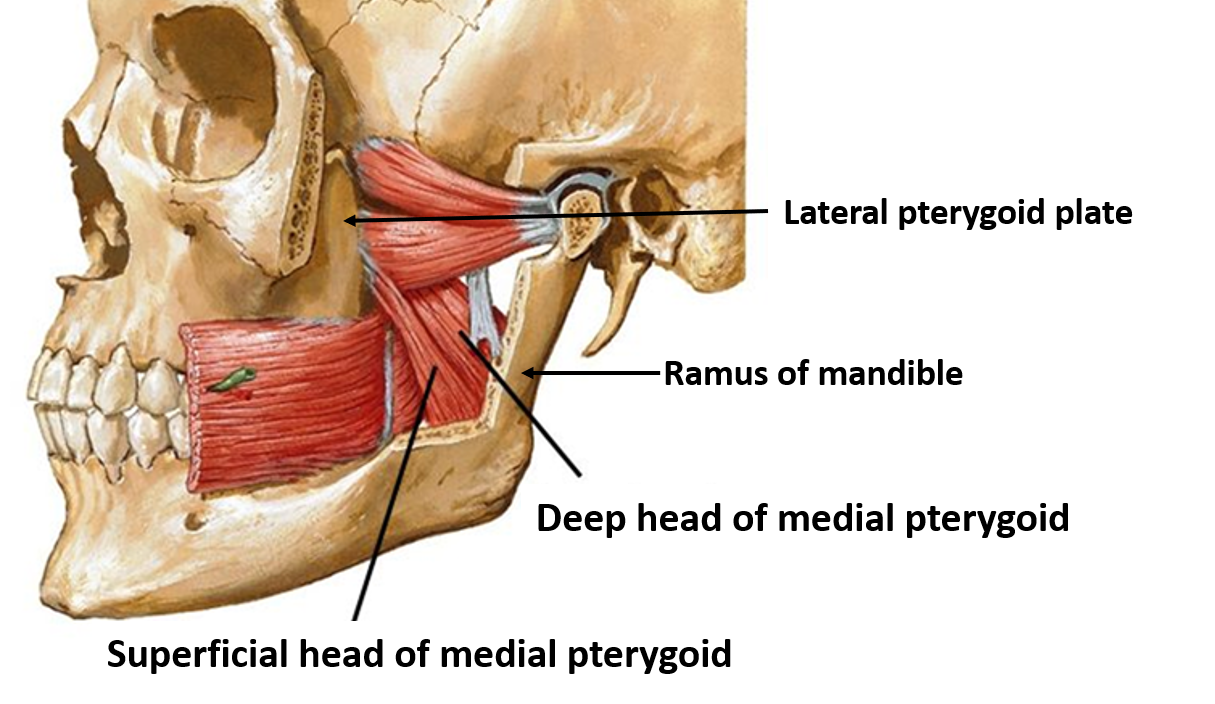
Lateral Pterygoid Muscle
Is a thick conical muscle which arises by two heads i.e. upper and lower heads.
Origin: Upper had arises from infratemporal surface of greater wing of sphenoid and the lower head arises from the lateral surface of lateral pterygoid plate.
Insertion: It is inserted on pterygoid fovea (in front of the neck of mandible) and the capsule and articular disc of temporomandibular joint.
Action: It depresses and protrudes the mandible. Along with medial pterygoid muscle produces side to side movement of mandible.
Nerve Supply: It is supplied by a branch from anterior division of mandibular nerve.
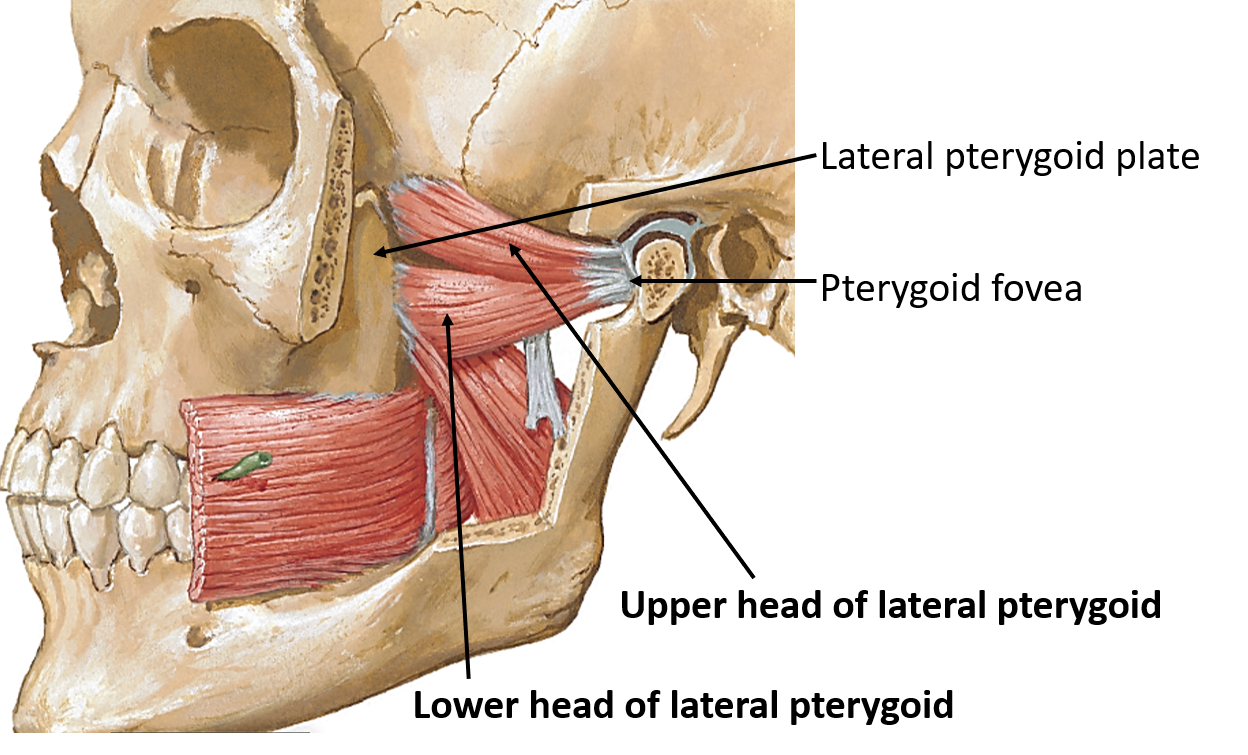
Actions of Muscles of Mastication
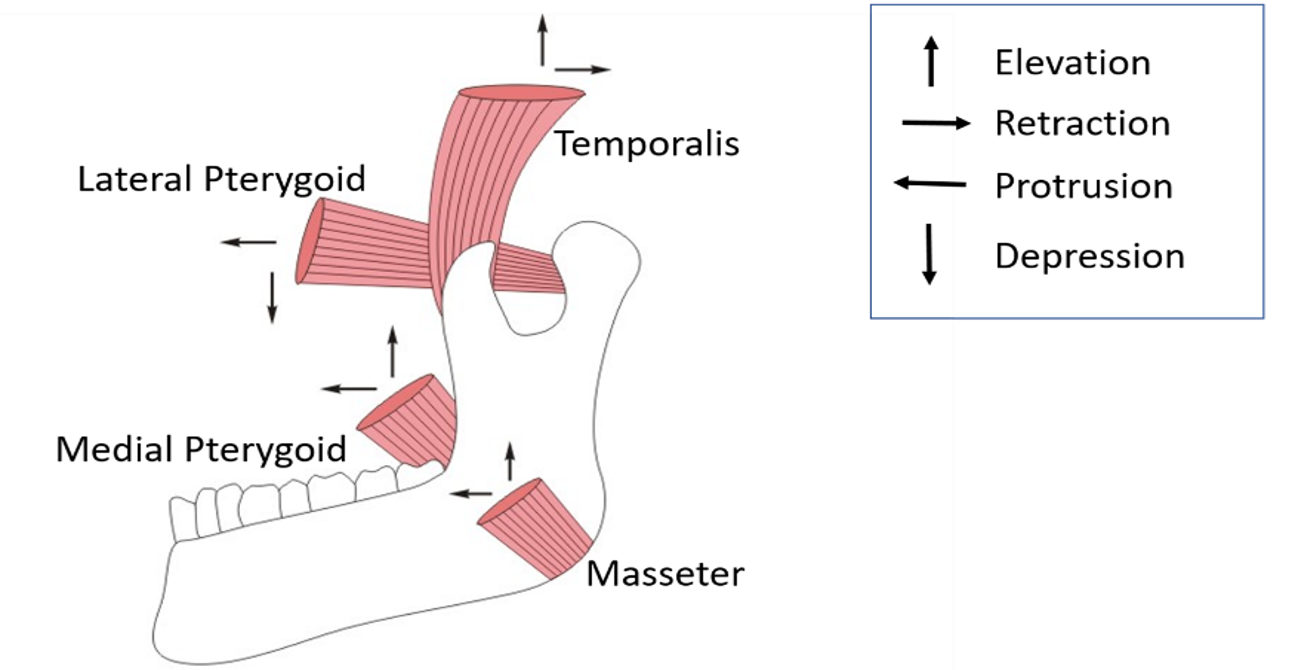

I have been following this website since 2019, I feel privileged to be her student.
In my head, I can still hear ma’am teaching me these topics and there is no better way possible for a person to learn anatomy than this.
Thank you Ma’am for this. Highly recommended ✨
Thanks Noori. ❤️😊
Best anatomy site by far! Well done!